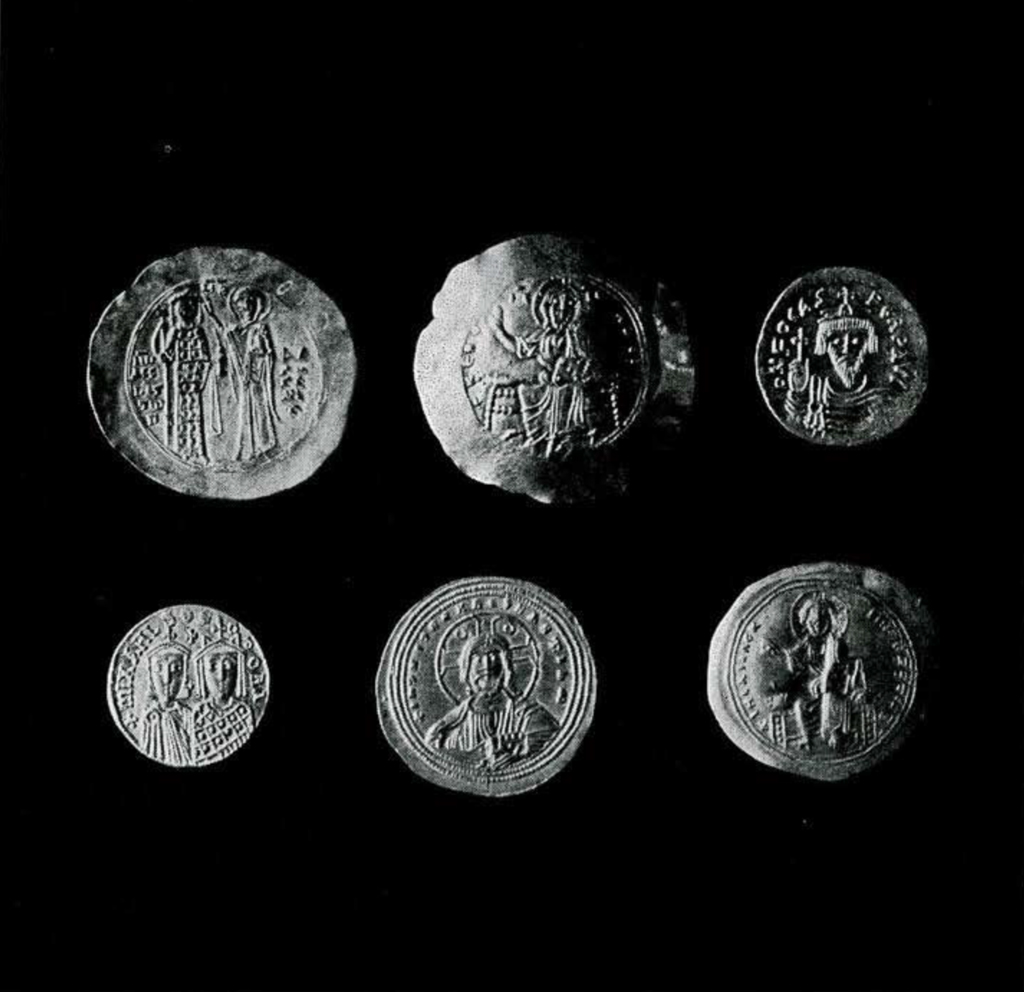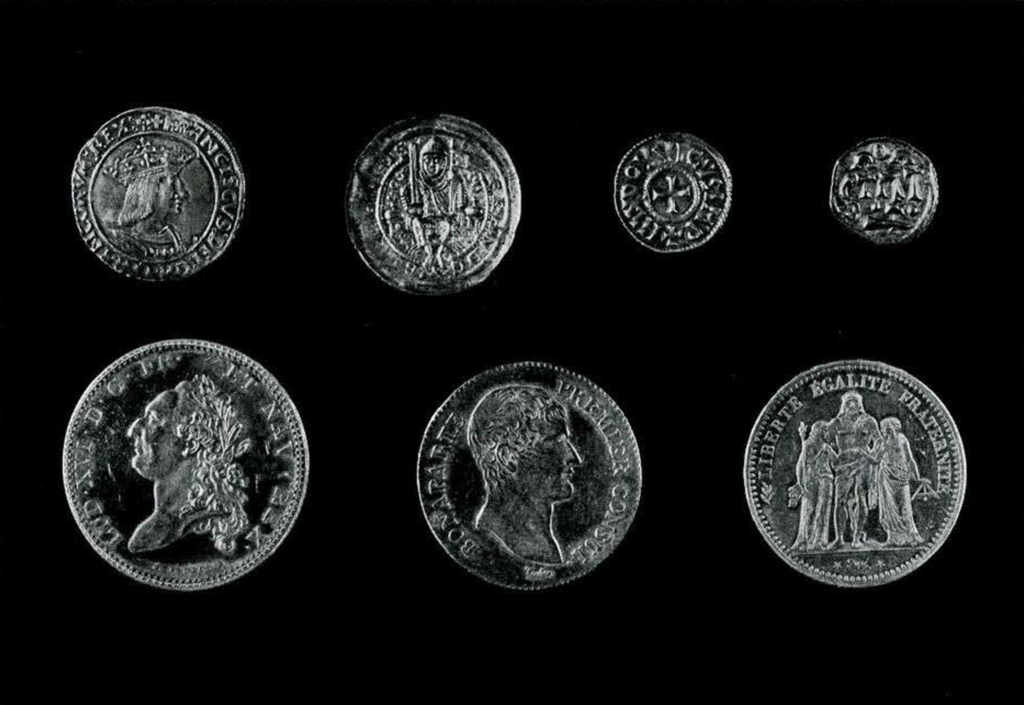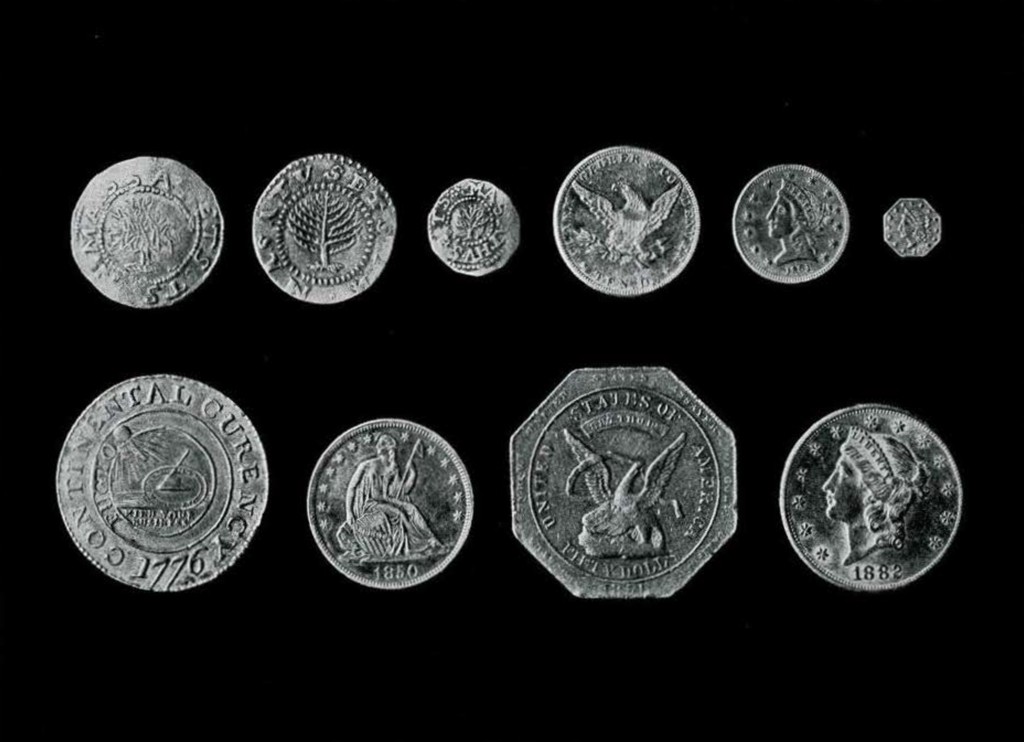In enumerating the most important types of money which have had validity among primitive peoples, the following arrangement has been according to the commodities which were utilized as money. Several other arrangements may suggest themselves, but since the commodity value appears to have had some bearing upon the selection of the monetary basis, such a classification recommends itself as the most meaningful.
Shells as money. Of all the types of money utilized by primitive peoples, none appear to have had such a wide distribution as the shells of conchylia such as those of snails, mussels, clams, oysters and others. Cowrie, the shells of the Cypraea Moneta and Cypraea annulus, have had monetary value in China, India, Siam and Africa; the shells of the dentalia sea-snails were popular on the American Northwest coast; shells of the Venus mercenaria were used in the making of wampum; and the shells of innumerable species of conchylia or mollusca were utilized on the different islands of Melanesia and Micronesia.

Museum Object Numbers: 29-126-516 / 29-126-41 / 29-126-456
Image Number: 21339
In some African regions, cowrie succeeded in retaining its monetary value until recent times. In 1931 the Lobi still exchanged six hundred cowrie for a French five-franc note. Naturally, the cowrie value varied from time to time and from area to area. It was lower in coastal regions where the supply was more abundant. Thus, in 1894 one American cent would have brought about one hundred cowrie in the coastal towns of Togo, but only forty some sixty miles inland. In the towns of Kano, one Maria Theresa dollar was exchanged for twenty-five hundred to three thousand cowrie in the middle of the last century, and for five thousand cowrie some thirty years later. Little information is available regarding the, comparative purchasing power of these shells. We hear that in the ‘nineties, on the market of Kuka, eggs were sold for eight cowrie, a chicken for between fifty-two and one hundred and sixty cowrie according to size. And an early traveller reports that in 1700, when cowrie was scarcer than it was later, a laborer at a trading post received twenty-five cowrie for a day’s work.
In Uganda, East Africa, one hundred cowrie strung together were coiled kiasi; ten kiasi mode one fundo; and ten fundo were regarded as a load. During the ‘nineties of the last century, the following prices were regarded as normal in the Bukoba district: three pieces of firewood, two cowrie; one egg, two cowrie; a chicken, thirty to fifty cowrie; a bunch of bananas, thirty; one smoked fish, twenty to fifty; one earthenware vessel, forty to a hundred; an iron axe, a hundred and fifty; and one goat, six hundred cowrie.
As has been noted, cowrie occurs in individual pieces and strung together in groups. Strings of cowrie are often more valuable than individual ones, apparently because the wages for those who strung them had to be deducted. Thus in the Dahomey hinterland, a string of thirty-three cowrie is said to have had a value of forty individual shells at one time, while another observer, reporting later, states that forty-seven shells had the value of fifty. In Timbuctu, five strings of sixteen cowrie each were valued as one hundred, and the large cowrie strings which the king of Dahomey owned are said to have had two thousand cowrie whereas they had only fifteen hundred by actual count.

Museum Object Numbers: 29-126-1551 / 29-126-1410 / 29-126-1510 / 29-126-1527 / 29-126-1535
Image Number: 21340
The use of shell money is essentially similar wherever such tokens ore used. Shells may represent individual values or they may be strung in long strips. The dewarra money of the Duke of York Island falls into the latter category. Here money is measured in length; a basic unit is the length from hand to hand across the chest with arms extended. There are smaller units, such as the length from the center of the chest to the hand of one extended arm, from the shoulder to the tip of the fingers, from the wrist to the finger and finally, the length of a finger. Each of these fixed measures is known by a specific name. Thus a chicken would cost half a full length, a cock one length, a large pig from thirty to forty full lengths and a small one ten lengths; a dozen taro could be had for a string the length of wrist to finger.
The peculiar evaluation of the Rossel Island money has been described above. The Yurok of Northwestern California used to string their dentalium shells by grading them according to the length of the individual shells; they had special names for the different sized shells, as well as for the strings consisting of shells of similar size. The larger ones, being scarcest, were more valuable than the more common and small ones. At the time of first contact between Europeans and the Yurok, a shell two and a half inches long had the value of about five dollars; one of two and five-sixteenths inches, two dollars; two and a half inches, one dollar; two inches, fifty cents; and one and a half inches, about twenty-five cents. The value of the strings varied according to the size of the shell. It took eleven of the long shells, and fifteen of the smaller ones to make a unit.
Under the category of shell money may be grouped mother-of- pearl and tortoise-shell. Both are said to have been in use in ancient China, while the former served monetary functions on the island of Yap in the Caroline group.
Teeth as money. In the islands of Melanesia, the teeth of numerous animals have gained the function of a currency. Aside from dog-teeth, which were mentioned above, those of pigs and boars were current in Northeastern New Guinea and on the Banks Islands, while whale – and porpoise – teeth are found in Fiji, the Gilbert Islands, and in parts of the Solomon Islands. Teeth money closely resembles cowrie in its use, occurring both in individual form and strung together. Specific lengths or individual teeth may represent the basic unit, but in some islands special ratios have been established for different kinds of teeth. In the Solomons, one dog-tooth had the value of five porpoise-teeth, and in Simbang one boar-tooth was equated to a hundred and sixty to two hundred dog-teeth. Such combinations made this currency rather flexible.

Image Number: 21341
Beads as money. Beads of glass, clay and stone have been most important in the trade of many primitive and advanced peoples of all continents, and they have enjoyed a popularity comparable only to that of precious metals in modern society. Even in intercontinental trade they have played a great role as media of exchange, and yet it is not without considerable hesitation that beads are listed here as money. Few of the beads were more than a preferred type of trade goods, but some may actually fall into the category of money, such as the so-called Aggry-beads of West Africa. The place of origin of these beads is unknown; although probably imported into West Africa a long time ago, their supply was maintained by accidental discovery in the soil. Thus they are rather scarce and of high value, so that in Ashanti Aggry beads were exchanged for their weight in gold. In the past these beads appear to have had the position of money among the Kru of the Liberian coast, where their value was equated with that of a Spanish dollar. In Southern Ethiopia and Ruanda, beads of European origin were strung together and these strings, sometimes with fifty, sometimes with a hundred beads, represented monetary units. In Liberia, to cite another example, individual beads had scalled values; while one type of bead was equated with five centimes, another type was given twice that value.
Feathers as money. Although feathers as such have little to recommend them as money, there is no reason why, under certain circumstances, feathers should not have had monetary significance. Among the Yurok, where dentalium shells were the main currency, the red scalps of woodpeckers had been given a place in the rate of dentalium values. In the literature, many types of “feather money” are mentioned, but the evidence does not always support such contentions. Thus the often cited little red feathers of the Melanesian Island of Santo Cruz are not money; they were displayed as symbols of wealth at ceremonies and there is no indication that they ever served as media of exchange.
Cloth as money. The best examples of cloth-money occur in some regions of the African Sudan. Narrow strips of cloth which are woven locally and are normally used in the making of dresses and blankets were manufactured for monetary purposes only. Strips of the length of the lower arm were often regarded as the basic unit and several of these were sown together and thus carried to the market for the purchase of other goods. Long and undivided lengths of this cloth represented higher values. In those regions where other types of money circulate, cloth units were normally equated with them. In Uganda, where bark cloth is popular, small pieces were manufactured exclusively for use as money. The well-known tapa cloth of the Polynesians, although it represented great value and was offered as tribute, did not have the characteristics of money. Other forms of cloth money are the previously discussed Hudson Bay blankets, and perhaps those skins which were given monetary functions in certain parts of Eastern Europe and Siberia.

Image Number: 21342
Iron as money. Although in ancient times iron appears to have served as money in some European and Asiatic areas, Africa is the classical region for iron money. Iron was utilized in many different forms, such as unwrought iron, bars of specific shapes, unfinished utensils, and finished products, including arrows and spear points, hoes and oxes, throwing irons, and several other forms.
The best representatives of iron money were naturally those forms which were specially shaped so as to serve only as media of exchange and not as commodity goods. In Northern Liberia, as well as in the adjacent regions of Sierra Leone and the French Sudan, iron staffs some forty or fifty centimeters long, T shaped on one end and kidney shaped on the other, were very common (see Fig. 5). As individual pieces or tied together in bundles they were exchanged in the local markets. Their value is sufficiently small to serve as a convenient unit in the regular purchase of needed commodities and, like that of cowrie, is subject to changes according to time and their proximity to iron centers. Thus in 1907 in the Sudan, five francs were exchanged for fifty or sixty of these pieces, whereas in 1929 on English shilling brought between sixteen and twenty of them in Northern Liberia.
Other iron objects were current in other regions. In the Gold Coast, large needles with circular heads were common in the early decodes of the seventeenth century; horseshoe shaped money circulated in Bonny; blade-like pieces, tied in groups of eight and ten, were used among the Mpong. Among the Gallo of Ethiopia, thin pieces of iron, about two feet long, were used; fifteen or sixteen of these would go for one Maria Theresa dollar. Innumerable are the shapes of iron money which Africans have produced (Figs. 5 and 6).

Image Numbers: 21343, 21344
But not all of these iron objects con be classified as money. Although iron hoes were a favorite trade object throughout wide areas of Tanganyika, and although they were traded in great quantities in the local markets, one can hardly regard them as money in the some sense as the iron tokens mentioned above; their ready acceptance as agricultural tools precludes their classification as monetary units.
Other metals as money. Copper money occurs in a few regions of the primitive world. The Handa crosses of Katanga have been mentioned before. Among the Azande, copper rings of differing sizes have been given monetary value. But other African copper objects, such as copper bars which were traded in the lower regions of the Congo, cannot be regarded as money symbols. The so-coiled “coppers” of the Indian of the American Northwest coast had social rather than economic significance, since they served as symbols of wealth for the upper classes only (Fig. 9). To what extent other metals have actually been used as money remains doubtful.
Precious metals as money. Outside of the regions where coined money became the recognized form of currency, and outside the regions of so-called higher civilization, little use has been made of precious metals. Silver, except for European silver coins like the Maria Theresa dollar, the Spanish dollar, and others which became popular in many parts of the primitive world, does not appear to have had monetary value. Whether gold achieved monetary status in primitive groups is a debatable subject. Gold dust was traded in several areas of Indonesia, West Africa, China and Mexico, but whether or not it may have represented money analogous to the gold dust of early California days is difficult to determine. A monetary value may perhaps be attributed to gold in Ashanti, since here a refined system of gold scales and gold weights was developed.
Salt as money. The classical area where salt-money was used is southern Ethiopia. Bars of salt, cylindrical in shape and with tapering ends (ca. twenty-eight centimeters long), were regarded as basic units. Ten flawless bars were equivalent to the value of a Maria Theresa dollar. Smaller values, as far as they were not expressed in glass beads, were created by breaking the salt bar into smaller pieces, measured by the width of a finger. This measurement, called guba by the Amhara, was the smallest unit, and the prices of commodities were expressed either in full length bars (amuleh or cau) or in one, two, three, or four guba. In conjunction with iron bars, salt was also used as money in Northern Liberia (see above). Salt bars, carefully packed in palm leaves, were about eighty centimeters long and some ten centimeters in diameter. Their value was equivalent to twenty iron bars. The use of salt-money has also been reported from Angola in Southern Africa and from Wadai in the Sudan.

Image Number: 21345
According to Marco Polo, salt-money was common in southwestern China, but since little salt cakes were stamped with the seal of the emperor these must be regarded as falling into the category of coins.
Tobacco as money. While tobacco has enjoyed a great popularity as a trade object in many parts of the world, among a few people it appears to have had the significance of a currency. Tobacco loaves served as money on the island of Nias, and in some parts of the African Sudan, while tobacco leaves served this purpose in the hinterland of Liberia. The most celebrated case of tobacco money is that in the seventeenth century in Virginia when tobacco values were lawfully equated with the valid English money system.
Cola and betel as money. The cola and betel nuts so popular with many primitive peoples as stimulants and cosmetics, and which have played a great role in their trade, cannot be regarded as proper money, in spite of many reports to the contrary. In some parts of the world they were used as temporary subsidiaries to other types of money, but everywhere they were ultimately used for the purposes which made them so desirable. In that respect, cola nuts differ fundamentally from tobacco and salt, for once having monetary status they were no longer, or only rarely, utilized as consumption goods.
Other types of money. In the literature there are numerous references to other types of money. The Aztecs are said to have used the beans of cocoa, and in some sections of Arabia coffee beans were used. Chinese vessels were employed as money among the Dyaks of Northern Borneo, ordinary earthenware vessels among the Balemba of the Transvaal. Cakes of wax, balls of rubber, and many other objects have been variously listed as money. To what extent they could be considered actually to constitute money depends upon their use. Since the term “money” has been used rather loosely, one should use caution in including these objects, especially when their function has not been specifically indicated.

